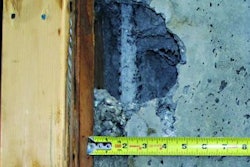Testifying before the Senate Banking Committee on the state of the nation's housing market, NAHB Chief Economist David Crowe said that, "Without access to credit, the residential construction industry will lose more small businesses and experience more job losses, with these impacts being widely spread across the nation."
Congress, regulators and financial institutions must work to restore acquisition, development and construction (AD&C) lending to permit home builders to contribute to the economy where and when housing demand emerges as the economy improves, he added.
Given housing's ongoing weakness in the economy, Crowe urged Congress to proceed cautiously when debating housing finance and budget issues that will impact job creation and future growth.
"When you consider the enormity of the total number of jobs attached to housing, a sector that accounts for 15 percent of our nation's GDP, now is hardly the time to step back from our nation's long-standing commitment to homeownership," said Crowe.
Noting that more than 1.4 million residential construction jobs have been lost since April 2006, Crowe said that as the housing market slowly mends, it stands poised to contribute to job growth and boost economic output.
"NAHB estimates that the construction of each single-family home creates three jobs; $90,000 in federal, state and local tax revenue; $145,000 in wage income; and $86,000 in net business income," he said.
In addition to calling for congressional action to help open the flow of credit to home builders, Crowe urged lawmakers to take the following steps to restore the health of the housing industry and to help put America back to work:
Agree to definite solutions regarding the future of government sponsored enterprises (GSEs) Fannie Mae and Freddie Mac that ensure a stable, reliable and affordable supply of credit to home buyers and a liquid secondary mortgage market. Preserve the mortgage interest deduction and other housing tax rules, such as the capital gain exclusion, the real estate tax deduction and the Low Income Housing Tax Credit (LIHTC). If eliminated or weakened, these well-established housing policies would result in wealth losses for home owners, lower home values, rising foreclosures, a diminished local tax base for many communities, and in the case of the LIHTC, an abandonment of a successful policy that facilitates the production affordable housing. Call on federal regulators to enact a broad-based definition of a Qualified Residential Mortgage (QRM) that would be exempt from the risk retention rules under last year's Dodd-Frank financial reform law. An overly restrictive QRM definition would drive numerous lenders from the current residential mortgage market and could result in excessive downpayment requirements of 20 percent or more, which Crowe said would squeeze first-time home buyers out of the market for years to come, preventing household formations and producing economic damage to the overall economy.
A Gradual Upturn
Crowe pointed to several factors that conditions in the housing market should show modest improvement in the coming months: An improving economy and continued job growth, low mortgage rates that are keeping housing affordable, stabilizing home values and three years of sub-normal household formation rates that has created pent-up demand to help reduce some of the excess housing inventory.
NAHB expects new-home sales will post a modest gain of 8 percent to 347,000 units in 2011 followed by a more substantial increase of 49 percent next year to 516,000 units.
Single-family housing starts will follow a similar trend to home sales, with an increase of 15 percent this year and 47 percent in 2012, which will raise the pace of single-family starts to 900,000 units by the end of next year. While a significant boost over current depressed levels, Crowe noted this is still 40 percent below NAHB's estimate of the long-term sustainable trend, based on demographics, replacement needs and second-home demand.
Multifamily housing starts, which have experienced great volatility in recent months, are projected to increase 21 percent in 2011 and 40 percent in 2012, rising to 210,000 units in the fourth quarter of next year, which is still 38 percent below NAHB's estimate of the long-term sustainable growth.
ABOUT NAHB: The National Association of Home Builders is a Washington-based trade association representing more than 160,000 members involved in home building, remodeling, multifamily construction, property management, subcontracting, design, housing finance, building product manufacturing and other aspects of residential and light commercial construction. NAHB is affiliated with 800 state and local home builders associations around the country. NAHB's builder members will construct about 80 percent of the new housing units projected for this year.
Follow NAHB on Twitter at www.twitter.com/NAHBMedia.
National Association of Home Builders (NAHB) Paul Lopez, 202-266-8409 [email protected] www.nahb.org
Source: National Association of Home Builders (NAHB)
<

















